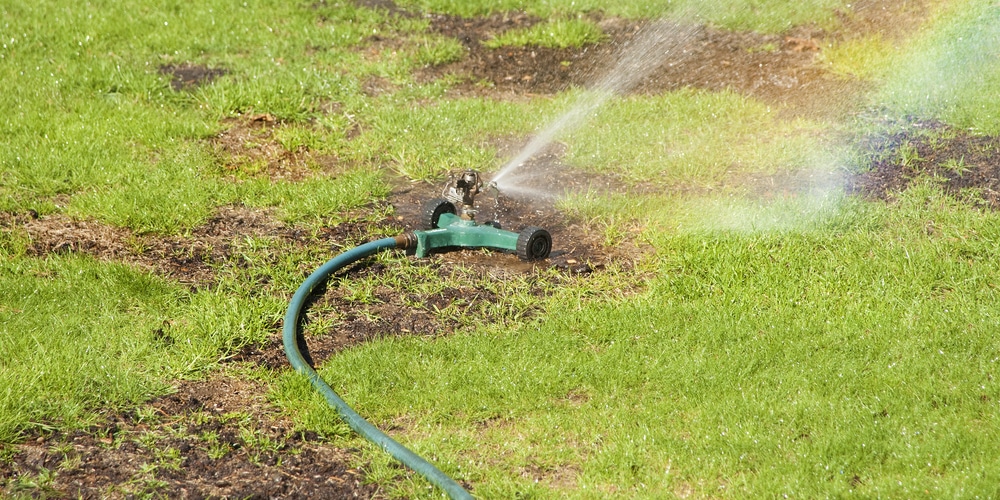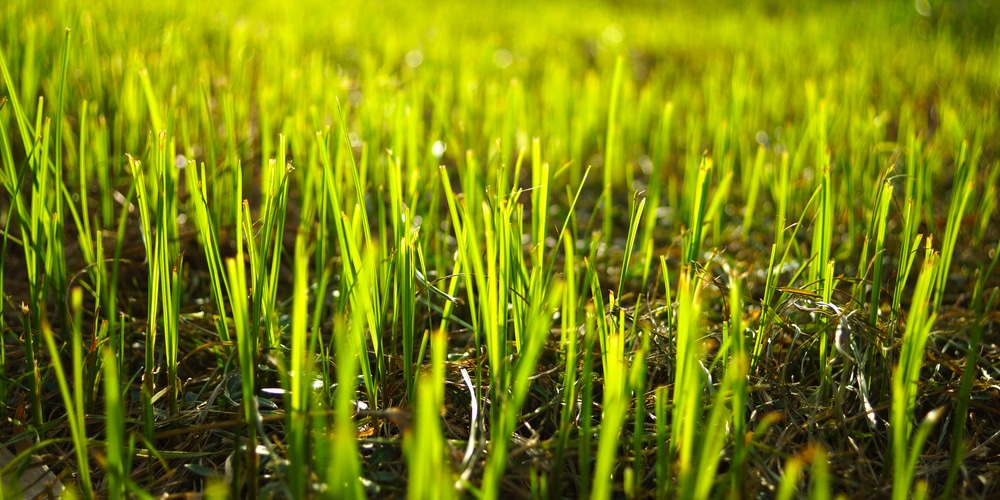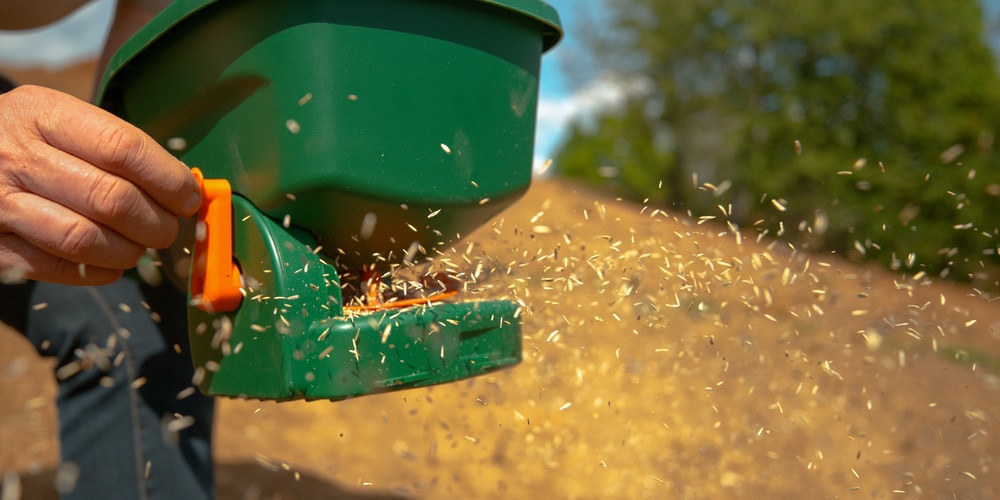When you invest time and effort into your lawn, the last thing you want is to realize the grass seed you’ve scattered may not sprout.
Understanding the longevity and viability of grass seed is essential to ensure a lush, green lawn.
Grass seeds are living entities, and while they are surprisingly resilient, they are not impervious to degradation over time. Factors such as storage conditions and seed age can impact whether your grass seed still has the potential to germinate.
The common belief that grass seeds have an indefinite shelf life is a misconception. Just like any other seed, grass seeds can expire and their ability to germinate decreases as time passes.
It’s important to know how to determine if your grass seed is still viable before you attempt to revitalize your lawn.
Proper storage is key to extending the lifespan of your grass seeds. They should be kept in a cool, dry place away from direct sunlight to maintain their germination capability.
The common belief that grass seeds have an indefinite shelf life is a misconception. Just like any other seed, grass seeds can expire and their ability to germinate decreases as time passes.
It’s important to know how to determine if your grass seed is still viable before you attempt to revitalize your lawn.
Proper storage is key to extending the lifespan of your grass seeds. They should be kept in a cool, dry place away from direct sunlight to maintain their germination capability.
Before you proceed with your lawn seeding, consider performing a simple viability test. This will save you time and resources by identifying whether new seeds are needed.
If your grass seed is too old or improperly stored, it may be time to purchase fresh grass seed to achieve the best results for your lawn.
Grass Seed Viability: 101
When planning your lawn care regimen, understanding how long your grass seed remains viable is crucial. Seed longevity can mean the difference between a lush green lawn and wasted effort.
Factors Affecting Shelf Life
Several key elements determine the shelf life of your grass seeds:
- Storage Conditions: To maximize viability, store your grass seed in a cool, dry place. Moisture and heat can significantly reduce the seed’s lifespan.
- Seed Quality: High-quality seeds with hardier coatings often withstand the test of time better than lower-quality seeds.
- Packaging: Original, unopened packaging provides the best protection against environmental factors. Once opened, the shelf life can decrease.
Using grass seeds within their viable period ensures better germination rates and a uniform lawn.
Typical Expiry Timeline
Different types of grass seeds come with varying expiry timelines:
- Cool-Season Grasses: These include varieties like Kentucky bluegrass and fescue, with a potential viability up to 5 years if stored properly.
- Warm-Season Grasses: Generally, these have a shorter lifespan, often around 1-2 years.
Remember, the viability and germination rate of grass seed diminishes as time passes, so fresher seed is always preferable.
Proper Storage Practices
To maintain the viability of your grass seed, adhering to proper storage practices is crucial. By controlling the environment where you store your seeds, you can significantly extend their shelf life and ensure successful germination when you’re ready to sow them.
Optimal Conditions
Temperature: Your grass seed thrives best in cool, dry conditions. Aim to keep the storage area at temperatures between 40-50 degrees Fahrenheit (4-10 degrees Celsius) to optimize the seed’s longevity.
Humidity: Moisture is the enemy of grass seed storage, as it can promote mold growth and premature germination. The ideal relative humidity for storing grass seed should be less than 50%.
Container: To protect your seeds from environmental variables and pests, store them in airtight containers. Metal cans with lids or plastic containers with tight seals are suitable options.
Common Storage Mistakes
- Leaving Seeds in Original Packaging: Often, grass seed bags are not moisture-proof. Once opened, transfer the seeds to an airtight container.
- Storing Near Heat Sources: Avoid placing your seeds near furnaces or in attics where the temperature can fluctuate drastically.
How to Tell if Grass Seed has Expired
When assessing the quality of grass seed, it is crucial to determine whether it has expired to ensure successful germination. The following methods will guide you through the process effectively.
Visual Inspection
Firstly, examine the seeds closely. Healthy seeds are typically uniform in color and free from any obvious damage.
If you notice seeds that are discolored, have a moldy appearance, or seem to be clumped together, these are signs that moisture may have compromised the seed’s quality. Seeds with a powdery mildew or fungal growth have most certainly expired and will not perform optimally.
Germination Test
Conducting a germination test can give you a clear indication of the seed’s viability:
- Moisten a paper towel with water.
- Place 10 seeds from the bag onto the towel.
- Fold the towel around the seeds, then place it inside a plastic bag.
- Situate the bag in a warm area, away from direct sunlight.
After 5-10 days, check for seeds sprouting roots or shoots; a good germination rate is a green light that the seeds are still viable.
If few or no seeds germinate, it’s likely that they have lost their ability to grow and should be replaced.
For deeper insights on how to carry out a germination test, consider reading about seed testing procedures.
Frequently Asked Questions
Grass seed is an essential component for cultivating a lush lawn and understanding its longevity and viability are crucial for gardeners. Here are some common questions to guide you through the nuances of grass seed shelf life and usage.
How can one determine the viability of grass seed?
To check if your grass seed is still viable, conduct a simple germination test.
Moisten a paper towel, place several seeds on it, and then put it in a warm location. After a few days, viable seeds will sprout.
What are the proper storage methods to extend the lifespan of grass seed?
Storing grass seed in a cool, dry location, away from direct sunlight, and in an airtight container will help preserve its quality for up to several years, as proper storage conditions can significantly extend its viability.
What is the germination time frame for fresh grass seed?
Fresh grass seed typically begins to germinate within 5 to 30 days, depending on the seed variety. For an accurate time frame, refer to the specific seed’s package.
Are there any risks associated with using grass seed past its prime?
Using expired grass seed can result in a lower germination rate, which may lead to an uneven or patchy lawn, and in some cases, it may not grow any new grass at all.
Does the effectiveness of grass seed diminish with age?
Yes, the potency of grass seed diminishes with age. As the seed ages, the germination rate declines, meaning fewer seeds will develop into grass plants over time.
How does exposure to extreme temperatures affect grass seed viability?
Extreme temperatures, whether hot or cold, can damage grass seeds, leading to reduced viability.
To maintain seed vigor, avoid storing seeds in locations that fluctuate greatly in temperature or have high humidity.
Last update on 2025-06-06 / Affiliate links / Images from Amazon Product Advertising API





